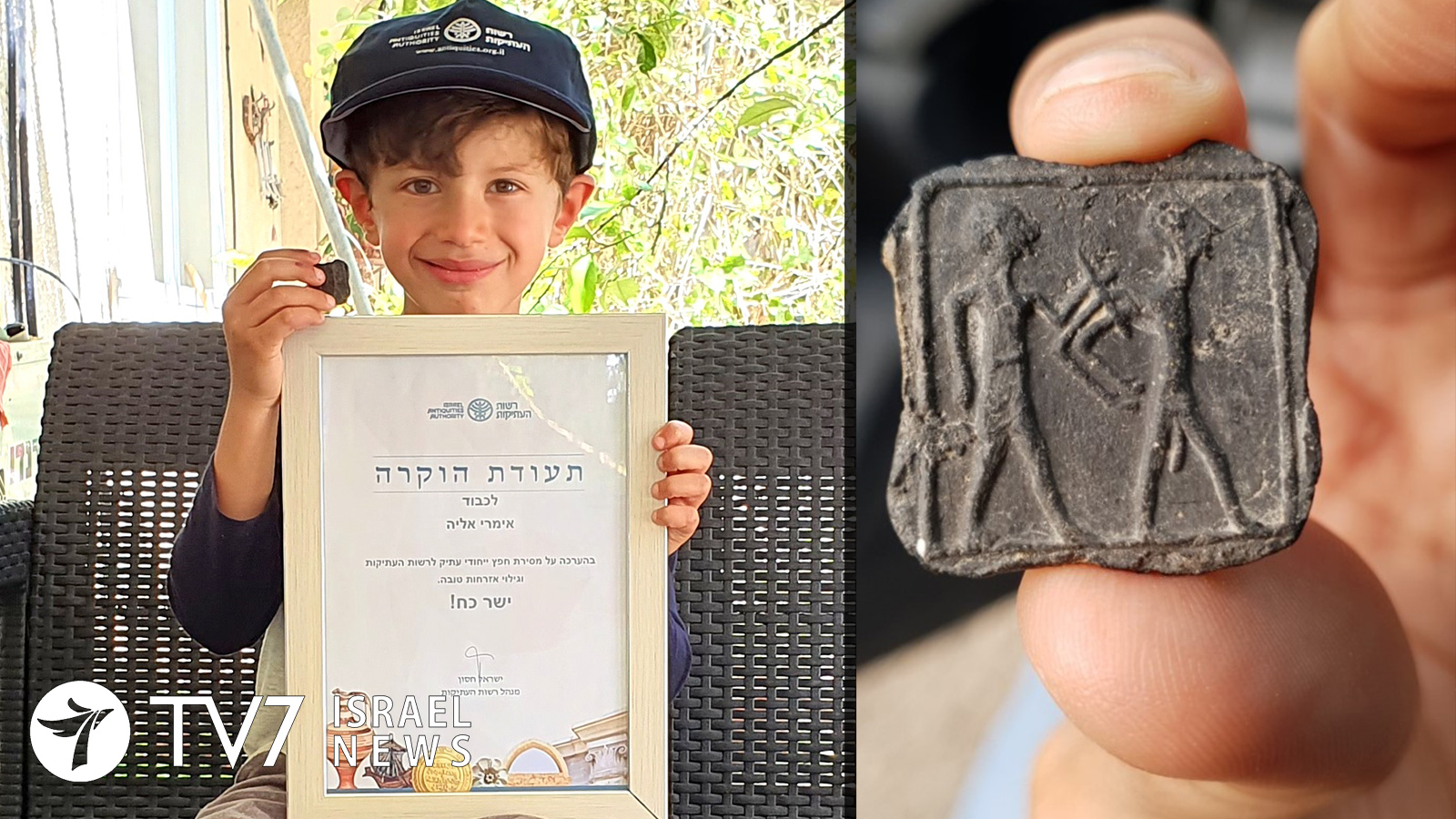The Israel Antiquities Authority (IAA) has revealed that a six-year-old Israeli boy has made the discovery of a lifetime.
Imri Elya was on a walk with his parents last March to the Tel Jemmeh archaeological site, not far from the family’s home on Kibbutz Nirim near the Gaza Strip, when he noticed a small, square clay tablet measuring 2.80 x 2.80 centimeters. The boy has been presented with a certificate of good citizenship for turning his remarkable find over to the National Treasures Department, which determined that it is 3,500 years old.
According to research by IAA archaeologists Saar Ganor, Itamar Weissbein and Oren Shmueli, the artifact was imprinted in a carved pattern – and fingerprints by the artist on its back have even survived.
The tablet portrays the scene of a prominent captor clad in a skirt leading a prisoner with hands tied behind his back. The captive was also naked, which experts say was meant to emphasize his humiliation. The artist may also have sought to convey ethnic differences between the subjects by depicting the captor with a full face and curled hair while the captive is thin and has an elongated face.
According to the Israel Antiquities Authority, the violence portrayed raises interesting questions about the historical background of the tablet, which is estimated to date back to the Late Bronze Age (between the 12th and 15th centuries BCE) based on similarities to the Egyptian art world and local Canaanite art. During this time frame the Egyptian Empire ruled Canaan, which was divided into “city states” ruled by local kings. Letters sent by Canaanite monarchs of that period to Egypt (known as the El Amarna letters) document internal struggles and control conflicts that existed between Canaanite cities.
In an IAA statement received by TV7, the research team said “The artist who created this tablet appeared to have been influenced by similar representations known in Ancient Near East art. The manner in which the captive is bound has been seen previously in reliefs and artifacts found in Egypt and northern Sinai.”
Tel Jemmeh, where Imri Elya unearthed the relic, has been identified with the Canaanite city of Yurza – one of the strongest Canaanite cities in the south of the country. The IAI team believes the tablet is a symbolic image of the power struggles between Yurza and another nearby city – possibly Gaza, Ashkelon or Lachish – or the struggle of a nomadic population residing in the Negev. The researchers say “the scene depicted on the tablet is taken from descriptions of victory parades; hence the tablet should be identified as a story depicting the ruler’s power over his enemies. This opens a visual window to understanding the struggle for dominance in the south of the country during the Canaanite period.”
According to Pablo Betzer, an archaeologist from the IAI’s Southern District, “Antiquities are our cultural heritage, and each find adds to the entire puzzle of the story of the Land.”
Unfortunately, many discoveries are hidden by their finders. Even worse, locals have been known to raid archeological sites to loot priceless treasures.
“There is great importance in turning archaeological findings over to the National Treasures Department to be researched and displayed for the entire public to enjoy,” said Betzer, stressing that “The delivery of the tablet to the Antiquities Authority indicates value education and good citizenship on the part of Imri and his parents. Well done!”
